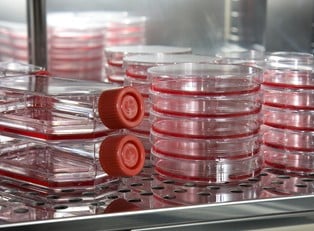Blood that remains in the placenta and umbilical cord after childbirth is rich in stem cells. Admittedly, research remains controversial, but recent successes in treating patients with cord blood stem cells have mitigated some of that controversy. Because stem cells are undifferentiated cells, it is possible to differentiate them into other types of cells. They can then treat and research additional treatments of blood diseases, genetic disorders, neurological conditions, and some cancers. Here’s a look at exactly how umbilical cord blood stem cells can be used.
Understanding the Retrieval and Storage of Cord Blood
Within minutes of an infant’s birth, a syringe is used to take cord blood from the umbilicus and the placenta in a painless procedure. A harvest yields approximately 1 unit of blood from the umbilicus and 10 units from the placenta. The bank will then process the blood, generally only preserving the stem cells and white blood cells. All banks should cryopreserve the sample in extremely low temperatures. Private banks can be pricey, and save the blood for the family to use later. Public banks accept donations, and use the blood for research or other families in need.
Therapeutic Uses in Private Blood Banks
A number of stem cell therapies are already available, including bone marrow transplants in people who have leukemia, aplastic anemia, lymphoma, and some immune deficiency disorders. However, much of the cord blood that is frozen is reserved for future treatment of that newborn. Essentially, this provides insurance for the family if certain diseases develop in later life. Frozen cord blood can also be used to treat genetic disorders in a sibling, making such therapies available to older children even if their cord blood was not harvested. Most significantly, cord blood stem cells are a 100% match to the child they came from, which guarantees the efficacy of treatment applications and eliminates the long and often unsuccessful search for a donor of either stem cells or bone marrow.
Because research has demonstrated the efficacy of these therapies, the technology for the harvesting and storage of cord blood stem cells has improved in recent years. As such, freezing and storing cord blood has become much more common. However, private banks charge between $1000 and $3000 for the initial deposit, and a yearly fee of $100-$200. Due to that cost, most parents choose to store cord blood in private banks if there is a family history of diseases that can be treated with stem cells, such as sickle cell anemia.
Research Applications in Public Blood Banks
Public blood banks may provide stem cells for therapies, but not for the child the cord blood came from. Many public donations are also used in a variety of research to find new ways of treating dozens of diseases, potentially helping many, many families. There are many ongoing studies investigating the use of stem cells in treating brain injuries, Type 1 diabetes, cerebral palsy, rheumatoid arthritis, Alzheimer's disease, Parkinson’s disease, and some types of cancer, among other disorders.
Twenty-five years ago, the first cord blood transplant occurred, and the only viable stem cell treatment was for leukemia. Today, as many as 80 diseases may respond to stem cell therapies, including many cancers, blood disorders, and degenerative diseases. These treatments are promising because of the undifferentiated nature of stem cells, which have the potential to “differentiate” into a nearly unlimited range of specific cells, leading to the replacement of damaged spinal cord, brain, neurological, organ, and muscle cells.
Stem cell therapies have a high probability of becoming a part of treatment protocols for the most debilitating and (currently) untreatable diseases. They represent a kind of banked health possibility for children, hedging their health bets for the future.
Stem cell therapies have a high probability of becoming part of the treatment protocols for the most debilitating and untreatable diseases and conditions. They represent a kind of banked health possibility for children, hedging their health bets for the future.



